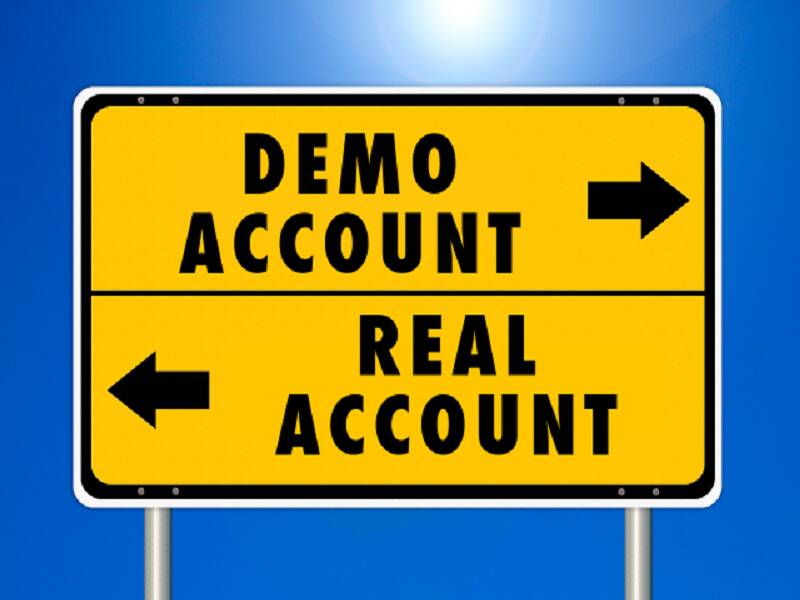Cryptocurrency News
How Long Does it Take to Mine 1 Bitcoin? BTC Mining Guide 2023
Contents
While this could alarm Bitcoin’s detractors, overall attention should be directed to the carbon emission levels and not consumption. This is a critical distinction because Bitcoin could consume the entire globe’s electricity, but if it comes 100% from renewables, its impact on carbon emissions would be negligible. However, solar and wind energy intermittency is a significant drawback compared to natural gas or nuclear power.

Any input satoshis not accounted for in the transaction outputs become the transaction fee. Miners receive the latest batch of transaction data, which is then run through a cryptographic algorithm. A hash, or string https://cryptolisting.org/ of numbers and letters that does not reveal any transaction data, is generated and used for validity. The hash is designed this way to help ensure that its corresponding block has not been tampered with.
How to Mine Bitcoin at Home?
Once you have all of these variables at hand you can insert them into a Bitcoin mining calculator and get an estimate of how many Bitcoins you will earn each month. If you can’t get a positive result on the calculator, it probably means you don’t have the right conditions for mining to be profitable. This is probably the most important and elusive variable of them all. The idea is that since no one can actually predict the rate of miners joining the network, neither can anyone predict how difficult it will be to mine in six weeks, six months, or six years from now. You’ll need to find out the exact power consumption of your miner before calculating profitability. This way, even small miners can join the mining game and have a chance of earning Bitcoin .
For those unfamiliar with Bitcoin’s inner workings, “mining” is how transactions are validated for a blockchain. It’s essentially a cryptographic competition to add blocks, or records, to the cryptocurrency’s ever-expanding blockchain network. In exchange for this service, winning miners are paid in Bitcoin , which reached a record price of more than $68,000 in November 2021. The Bitcoin network’s hardware experienced rapid technological evolution in only ten years. Bitcoin mining is the process in which new BTC coins are introduced into circulation to reward those who participate in securing the network and confirming transactions. Anyone can mine Bitcoin as it is a decentralized blockchain network, but very few are currently involved in the activity owing to the huge initial investment cost.
She has expertise in finance, investing, real estate, and world history. Kirsten is also the founder and director of Your Best Edit; find her on LinkedIn and Facebook. Passionate about driving product growth, Shivam has managed key AI and IOT based products across different business functions. He has 6+ years of product experience with a Masters in Marketing and Business Analytics. Most GPUs rely on auxiliary fans that prevent degradation during longer periods. Hence, crypto mining doesn’t harm the GPU/computer until it’s cleaned to prevent damage.
A miner currently earns 6.25 Bitcoin (about $125,000 as of September 2022) for successfully validating a new block on the Bitcoin blockchain. Founded in 1976, Bankrate has a long track record of helping people make smart financial choices. We’ve maintained this reputation for over four decades by demystifying the financial decision-making process and giving people confidence in which actions to take next. Find out about Bitcoin’s artificial inflation process works and what it means for Bitcoin’s price and its users. Investopedia requires writers to use primary sources to support their work.

Hashes are generated to secure data transferred on a public network. Miners compete with their peers to zero in on a hash value generated by a crypto coin transaction, and the first miner to crack the code gets to add the block to the ledger and receive the reward. Meanwhile, new coins are generated to reward miners for their work in securing the network. Since distributed ledgers lack a centralized authority, the mining process is crucial for validating transactions. Miners are, therefore, incentivized to secure the network by participating in the transaction validation process that increases their chances of winning newly minted coins. This is a latest way of mining Bitcoins, where the miner can buy a cloud mining service or purchase a contract from a cloud mining provider who is specialized in cryptocurrency mining rigs.
Security and Difficulty
Instead of setting up your own mining device, you’re essentially renting one and receiving the profits after maintenance and electricity costs are deducted. While it may sound like a good deal at a glance, cloud mining normally requires committing to a contract, and, if crypto prices fall, you’re unlikely to break even. Blocks offer a set amount of Bitcoin as a reward; the amount is cut in half for every 210,000 blocks that are mined . The Bitcoin mining process always starts with a block that contains a group of transactions. The transactions have already gone through an initial security check by the network to verify that the sender has enough Bitcoin and has provided the correct key to their wallet. One environmental impact of Bitcoin is that it worsens climate change.

Maintaining the blockchain also helps prevent fraudulent transactions and activity, such as someone trying to transfer bitcoin they don’t own. They vary based on network conditions, such as the number of transactions at a given point. Similarly, ASIC mining is yet another method of mining cryptocurrencies. Unlike GPU miners, ASIC miners are specifically designed to mine cryptocurrencies, so they produce more cryptocurrency units than GPUs.
What are the risks of Bitcoin mining?
On 29 November 2013, the cost of one bitcoin rose to a peak of US$1,242. In 2014, the price fell sharply, and as of April remained depressed at little more than half 2013 prices. The company’s goal is to fund 100 bitcoin businesses within 2–3 years with $10,000 to $20,000 for a 6% stake. According to a 2015 study by Paolo Tasca, bitcoin startups raised almost $1 billion in three years (Q – Q1 2015). In August 2020, MicroStrategy invested $250 million in bitcoin as a treasury reserve asset.
- As with any other income-generating activity, profits from bitcoin mining are taxable.
- While its price has varied significantly, one Bitcoin can trade for tens of thousands of dollars.
- Bitcoin mining is the process for validating Bitcoin transactions and minting new coins.
- Bitcoin, on the other hand, creates a system that has a decentralized ledger.
- This process is known as Bitcoin halving, where the block rewards are split into half.
In the early life of Bitcoin, node operators and miners performed very similar operations using similar hardware called central processing units . The genesis block was almost certainly mined by a computer using its CPU. There are ways to reduce this period such as migrating to a location with cheaper electricity, investing in more miners, or even joining a mining pool that charges a lower commission. All these changes might contribute towards increasing our profitability.
Miners soon realized that they could increase their profits by combining more GPU units. As a result, entire mining farms were built in regions where there is cheap access to electricity and computer equipment. Some mining companies even outsourced their computing power by renting it to consumers. Mining is the process of verifying transactions and creating new coins.
What Does It Take to Run a Profitable Bitcoin Mining Venture?
Additionally, bitcoin exchanges, where bitcoins are traded for traditional currencies, may be required by law to collect personal information. To heighten financial privacy, a new bitcoin address can be generated what is klever for each transaction. All bitcoins in existence have been created through this type of transaction. The bitcoin protocol specifies that the reward for adding a block will be reduced by half every 210,000 blocks .
In reality, they do not have a clue, and that’s only another way to attack Bitcoin. The vast majority of Bitcoin’s energy consumption happens during the mining process. Once coins have been issued, the energy required to validate transactions is minimal. Solo mining or DIY mining is when participants use their specialized hardware to search for blocks alone without joining a mining pool.
As Bitcoin started to catch on, people looked for more powerful mining solutions. Satoshi Nakamoto, Bitcoin’s inventor, crafted the rules for mining in a way that the more mining power the network has, the harder it is to guess the answer to the mining math problem. So the difficulty of the mining process is actually self-adjusting to the accumulated mining power the network possesses. The block of transactions you’ve created, along with your solution, is sent to the whole network so other computers can validate it. Bitcoin, on the other hand, creates a system that has a decentralized ledger.
It is generally difficult for an individual bitcoin miner to successfully create a new hash for a block. They combine the computational resources of many individual miners to increase the chance of successfully hashing a block. Rewards are then distributed to the miners based on how many resources they provide. This method does not require as many of the upfront costs that are involved in bitcoin mining. As of 2013 just six mining pools controlled 75% of overall bitcoin hashing power.
Limitations Behind Blockchain Mining
Bitcoin runs on a decentralized computer network or distributed ledger that tracks transactions in the cryptocurrency. When computers on the network verify and process transactions, new bitcoins are created, or mined. These networked computers, or miners, process the transaction in exchange for a payment in Bitcoin. On 19 January 2021, Elon Musk placed the handle #Bitcoin in his Twitter profile, tweeting “In retrospect, it was inevitable”, which caused the price to briefly rise about $5,000 in an hour to $37,299. On 25 January 2021, Microstrategy announced that it continued to buy bitcoin and as of the same date it had holdings of ₿70,784 worth $2.38 billion.
A disproportionately large number of blocks are mined by pools rather than by individual miners. Calculating the Bitcoin Mining profitability helps evaluate the mining rewards and mining costs. The hashrate values are adjusted, and an appropriate mining hardware device is selected from the ASIC Bitcoin miners list. Miners must solve the hash puzzle by finding the hash below a given target through the difficulty requirement. The target, stored in the header, is expressed as a 67-digit number that will determine the mining difficulty based on the number of miners competing to solve a hash function. It is important to note that this difficulty adjusts after every 2016 blocks are created depending on how much time it took miners in the previous 2016 blocks to solve an equation.
However, technical knowledge is required to calculate the profit generated through the Bitcoin mining process. Many of the larger producers are committing to transitioning to renewable energy, either through direct purchases or by acquiring carbon credits. This strategy is only effective, of course, as long as crypto mining doesn’t increase demand in the process. In terms of revenue, miners can expect to earn the block reward and a transaction fee if and when they win a block. Sometimes, opposing miners might reach the same data block simultaneously.
This process will continue until around the year 2140, when the flow of new bitcoin will drop from one satoshi per block to zero. The software validates the entire blockchain, which includes all bitcoin transactions ever. This distributed ledger which has reached more than 235 gigabytes in size as of Jan 2019, must be downloaded or synchronized before full participation of the client may occur. Although the complete blockchain is not needed all at once since it is possible to run in pruning mode.
